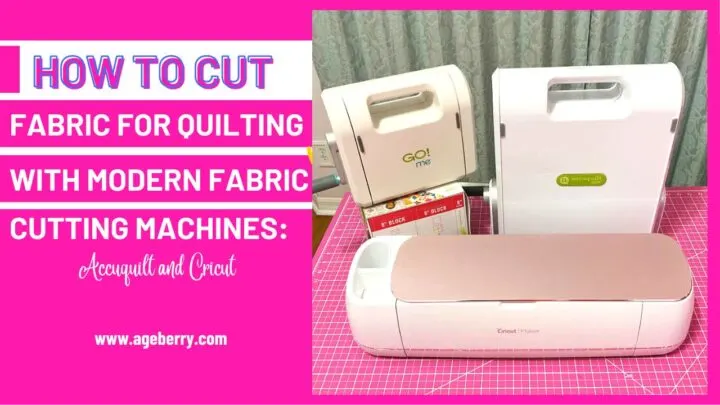As a fellow quilter, I understand the excitement and challenge that comes with selecting the perfect fabric for your creations. Whenever I visit my local Joann fabric store, I’m always struck by the sheer number of quilting cottons available. And honestly, I used to wonder why there were so many different prices for what seemed like the same fabric.
But after taking a closer look, I realized that there are actually quite a few differences between the various quilting cottons. Of course, the manufacturer plays a role in the pricing, but there are also differences in quality that can affect the final outcome of a project.
So, I decided to put together a guide to help answer some of the questions you might have about this fabric. Let’s explore the wonderful world of quilting cotton!
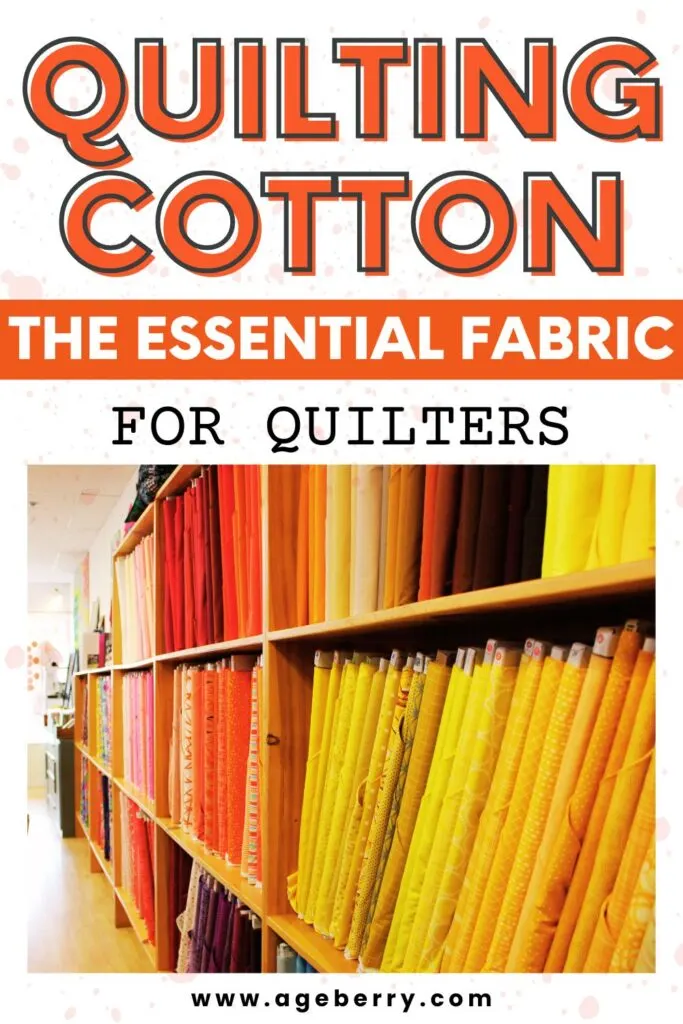
- What Is Quilting Cotton?
- What Is Quilting Cotton Used For?
- Why Is It The Best Fabric For Quilting Projects?
- Quilting Cotton weight
- What Is Quilting Cotton’s Thread Count?
- How Is Quilting Cotton Different From Other Cotton Fabrics?
- Where Can You Buy Quilting Cotton Fabric?
- Does Quilting Cotton Shrink?
- Does Quilting Cotton Need to be Prewashed?
- Where is Quilting Cotton Made?
- Can Quilting Cotton be Used for Clothing?
When you select fabric for a quilting project, it’s easy to get caught up in the colors and patterns. While those are certainly important factors to consider, there are other things to keep in mind as well. For example, you’ll want to think about the quality of the fabric and how it will hold up over time. Additionally, the weight of the fabric can be an important consideration.
What Is Quilting Cotton?
Simply put, quilting cotton is a type of plain weave fabric that is made from 100% cotton. It’s generally a medium weight woven fabric with a simple weave style, but it can vary in thickness and quality depending on the specific brand.
For example, some quilting cottons are organic, meaning they are made from cotton that has been grown without the use of synthetic pesticides or fertilizers. Others may be treated with chemicals to make them stiffer and easier to work with.
Despite these variations, all quilting cottons are specifically designed for use in quilting projects. They are available in a wide range of colors, patterns, and designs, making it easy to find the perfect fabric for your project.
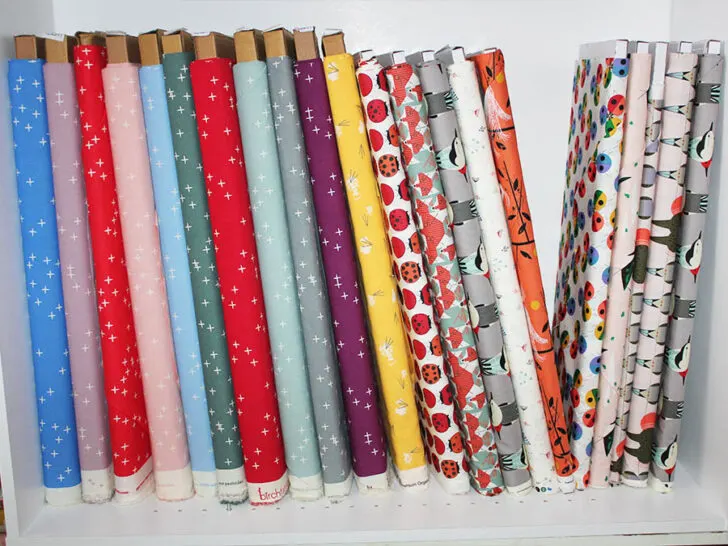
What Is Quilting Cotton Used For?
Quilting cotton is obviously used for making quilts, but it can also be used for making a wide range of accessories, home decor items and even clothing.
Some popular uses for quilting cotton include making tote bags, pouches, wallets, aprons, table runners, placemats, pillow covers, pot holders, oven mitts, coasters, wall hangings, banners, toys, baby blankets, etc.
I’ve made many small quilting projects over the years, and this is one of them – a round quilted placemat. They’re easy to make and can be customized to match your decor or color scheme. If you’re interested in making your own placemats, be sure to check out my tutorial
How To Make A Round Quilted Placemat | Free Printable Template
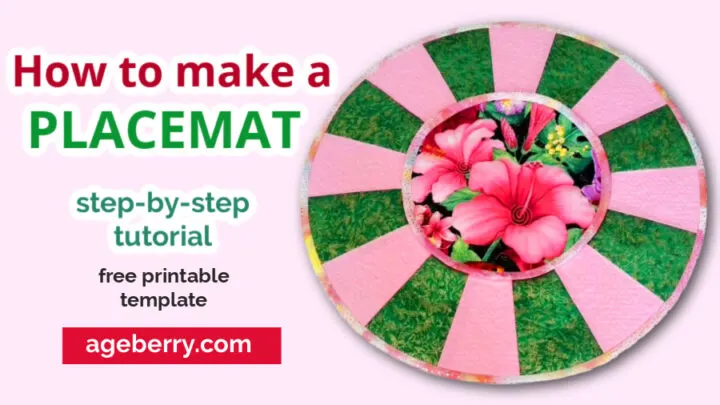
The versatility, durability, and wide range of colors and patterns make quilting cotton a popular choice for DIY projects of all kinds.
Why Is It The Best Fabric For Quilting Projects?
Quilting cotton is the best choice for quilting projects for several reasons:
- It’s very easy to find. In fact, it’s in the majority of fabric options at Joann stores (you can also find fabric stores that sell only quilters cotton).
- There’s a huge variety of patterns to use and enjoy.
- It’s great for beginners because it’s easy to cut, easy to work with since it presses well, doesn’t fray much and holds a crease like a champ.
- Cotton naturally tries to hold together and “stick to itself”. This quality is actually quite helpful when you’re sewing patches together.
- It’s affordable. Quilting cotton is a relatively inexpensive fabric, which makes it a great choice for quilters on a budget.
- It is durable fabric that can withstand the wear and tear of everyday use.
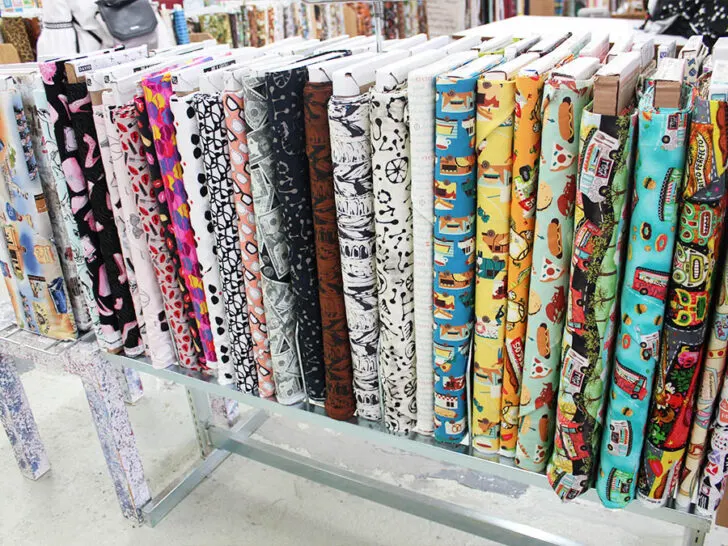
Quilting Cotton weight
The weight of quilting cotton can vary depending on the specific fabric. Generally, it is a medium weight fabric that is easy to work with and has a simple weave style with slightly stiff drape and a lot of body.
Some heavier quilting cotton fabrics can weigh around 6 ounces, while lighter ones can weigh around 4 to 5 ounces.
To determine the weight of the quilting fabric you are considering purchasing, you can check the fabric’s label (in a fabric store) or description (for online purchases).
The weight of the fabric is often listed in ounces per square yard (oz/yd²) or grams per square meter (g/m²). For example, a fabric labeled as “4 oz/yd²” or “135 g/m²” is a lightweight quilting cotton, while a fabric labeled as “6 oz/yd²” or “203 g/m²” is a heavier quilting cotton.
When I was buying quilting cotton fabric from Spoonflower brand, I noticed that they provide information about the weight of the fabric. This can be really helpful when choosing a fabric for a project because it gives you an idea of how thick or thin the fabric is. At Spoonflower, they list the weight of each fabric, which makes it easy to compare different options.
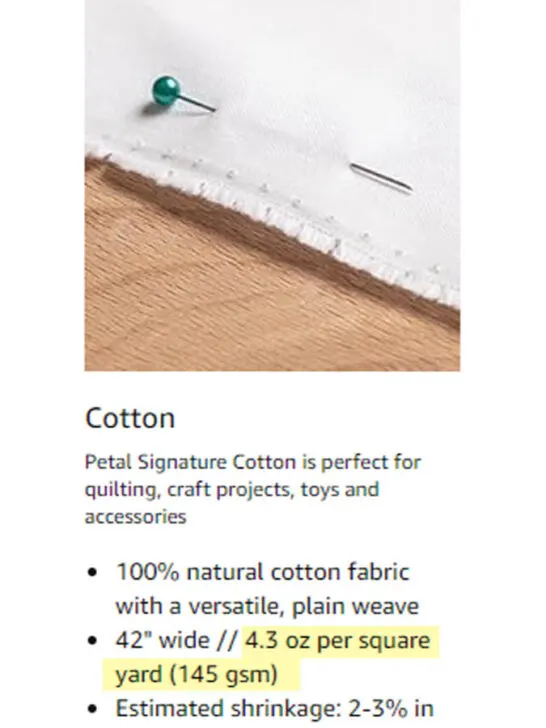
If the weight of the fabric is not listed, you can estimate its weight by holding it in your hand and feeling its thickness and density. A heavier quilting cotton will feel thicker and denser, while a lighter quilting cotton will feel thinner and more lightweight.
A heavier fabric may be better suited for a quilt that will be used frequently, while a lighter fabric may be better for a quilt that will be used less often (for example, a wall hanging) or for a different type of DIY project altogether.
The weight of quilting cotton depends on the fabric’s thread count. The higher the thread count, the heavier the fabric will be.
What Is Quilting Cotton’s Thread Count?
The thread count of quilting cotton varies depending on the specific fabric. Generally, quilting cotton has a thread count of around 68 x 68 threads per square inch. This is higher than the thread count of many other fabrics, which makes it a good choice for quilting projects.
Fabrics with lower thread counts, such as those around 50 or 60 per square inch, might be too lightweight for quilts. These fabrics tend to unravel, shrink more, be less durable, and even may allow batting to come through the weave in the finished quilt.
To determine the thread count of a quilting fabric, you can check the fabric’s label or product description (if you buy online). However, the thread count is not often listed.
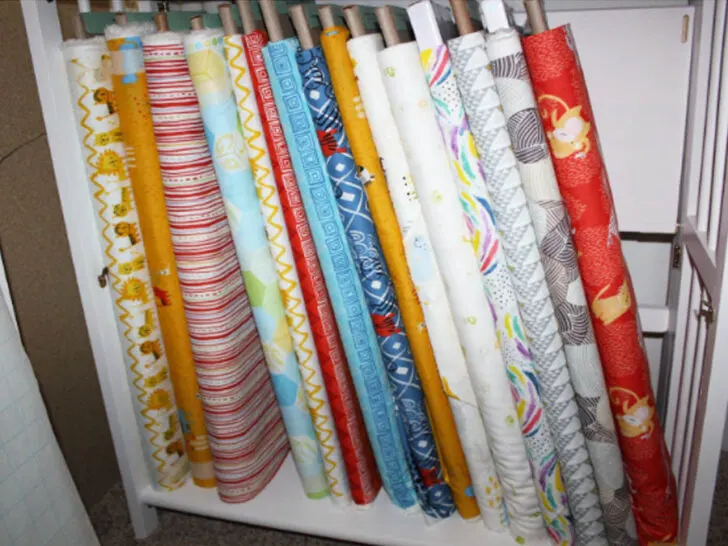
If the thread count is not listed, you can estimate it by holding the fabric up to the light and examining the weave. A higher thread count fabric will have a tighter weave and a smoother surface, while a lower thread count fabric will have a looser weave and a slightly rougher surface.
I found out that the highest thread count for quilting cotton is around 200 threads per inch.
However, quilting fabrics with thread counts of 200 or higher are less common and may be more expensive than those with lower thread counts.
A higher thread count is a better quality fabric because it is:
- Denser
- Holds dye better
- It’s more durable
- Feels smoother and more luxurious
But a higher thread count does not necessarily mean that a fabric is more suitable for quilting projects. The thread count of a quilting cotton fabric should be considered in conjunction with other factors like weight, durability, and design to determine if it’s the right choice for your specific project.
If you purchase quilter’s cotton at a big box store (like Walmart), you may find that it has a lower thread count.
How Is Quilting Cotton Different From Other Cotton Fabrics?
Quilter’s cotton differs from other types of cotton in several ways.
Quilting Cotton vs Apparel Cotton
While apparel cotton and quilting cotton are both 100% cotton, quilter’s cotton is a plain weave, sturdy medium weight fabric that’s designed to withstand washing many times.
The main differences between quilting cotton and apparel cotton are:
#1. Thread count: Quilting cotton typically has a higher thread count than apparel cotton, which makes it more durable and better suited for quilting projects.
#2. Weave: Quilting cotton has a simple, plain weave that gives it a slightly stiff drape and a lot of body. What is the plain weave? It involves weaving the warp and weft threads over and under each other in a simple, alternating pattern to create a flat, even surface.
Apparel cotton can have a plain weave too but it’s usually a looser weave that gives it a softer drape and more fluid movement.
Apparel cotton can be woven in a variety of ways, depending on the intended use of the fabric. Some other common weaves for apparel cotton include: twill weave, satin weave, dobby weave, etc.
#3. Weight: Quilting cotton is typically a medium weight fabric that is neither too heavy nor too light, while apparel cotton can range from lightweight to heavyweight depending on the intended use.
#4. Design: Quilting cotton is available in a wide range of colors, patterns, and designs that are specifically created for use in quilting projects, while apparel cotton is available in a wider variety of designs that are intended for use in clothing.
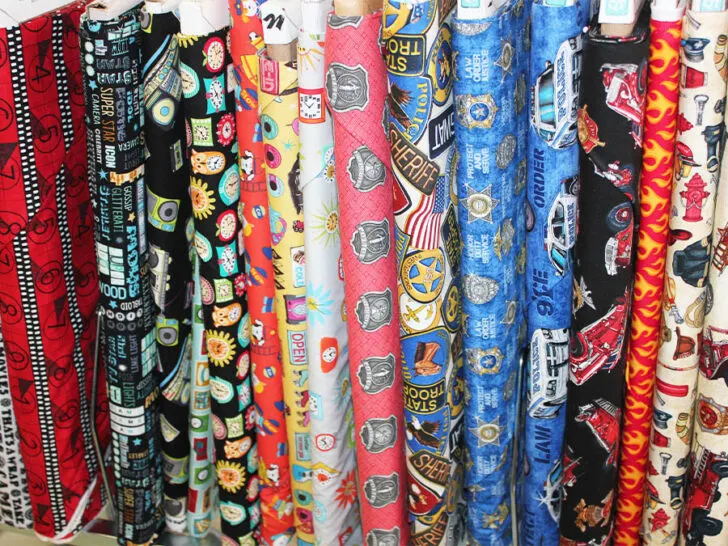
#5. Fabric Width: Quilting cotton is mostly available in 42 – 44 inches wide, while apparel cotton can be 54-60 inches wide. If you sew a garment with quilting cotton, you’ll likely need to purchase extra fabric due to this difference.
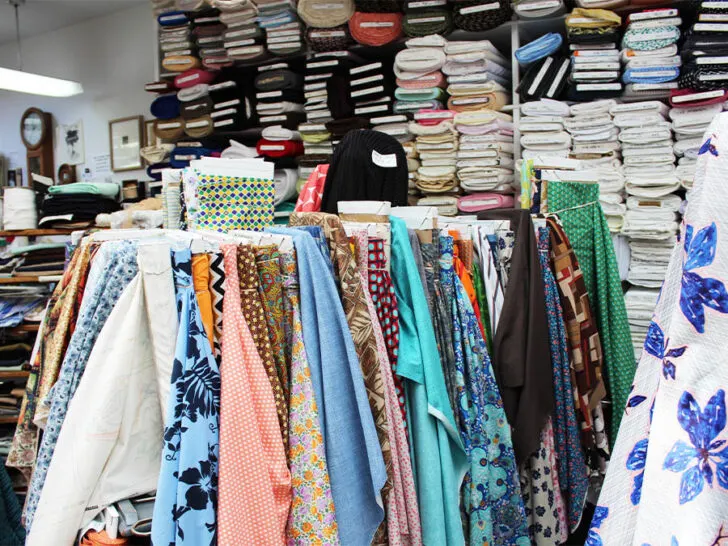
#6. Softness: Cotton quilting fabric isn’t especially soft due to its plain weave, which gives it a stiffer drape and more body than apparel cotton. While this makes it a great choice for quilting projects, it may not be the best choice for clothing that requires a softer, more fluid fabric.
#7. Woven vs Knit: Quilting cotton is always woven fabric.
Cotton used in apparel can come in both woven and knit fabric.
Knit cotton is often used in garments that require stretch and movement, such as t-shirts, sweaters, and leggings. Knit cotton fabric is typically softer and more comfortable than woven cotton, making it a popular choice for everyday wear. Knit cotton can come in a variety of weights and textures, from lightweight jersey to heavier ribbed knit.
✅ Related tutorial: Different Types of Knit Fabrics According To Fiber Content Plus Brands of Knits Manufacturers
Quilting Cotton vs Flannel
Both quilting cotton and flannel are popular choices for quilting projects, but they have different characteristics.
#1. Apparel projects: While quilting cotton is primarily used for quilting projects, flannel can also be used for apparel projects, especially for fall and winter clothing items like shirts, jackets, and pajamas. Flannel’s soft and fuzzy texture makes it a cozy and comfortable fabric to wear, especially in cooler weather.
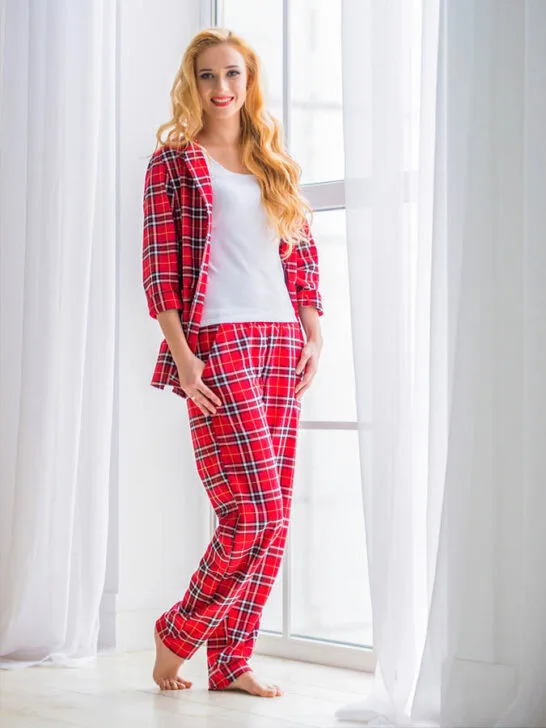
#2. Weave: Quilting cotton has a tight, plain weave that gives it a structured and slightly stiff drape, while flannel has a looser, brushed weave that gives it a soft and fuzzy texture.
#3. Usage: Quilting cotton is typically a medium weight fabric that is suitable for all kinds of quilting projects, while flannel is ideal for cozy winter quilts and blankets.
#4. Care: Quilting cotton is easy to care for and can be machine washed and dried, while flannel requires more care to prevent shrinking and pilling. Follow the care instructions carefully to ensure that flannel retains its softness and texture over time.
# 6. Design: While quilting cotton is available in a huge range of designs and patterns, flannel is more limited in its design options. If you’re looking for quilting cotton or flannel at Joann Fabric, you may notice that there are more aisles dedicated to quilting cotton than to flannel. This is because quilting cotton is a more versatile fabric that can be used for a wide range of projects, including quilting, sewing, and crafting. As a result, Joann Fabric typically stocks a larger selection of quilting cotton.
# 5. Texture: Quilting cotton has a smooth, slightly stiff texture that makes it easy to cut and sew, while flannel has a soft, fuzzy texture that can make it more difficult to work with.
✅ Related tutorial: Everything You Need To Know About Sewing With Flannel Fabric
Where Can You Buy Quilting Cotton Fabric?
Many years ago it used to be that you could only find quilting cotton fabric at quality quilt shops. Now large fabric chains carry quilting fabric as well. And in some cases, those big shops may have more quilting fabric offerings than other fabrics!
When you visit a quality quilt shop to look for fabric, you won’t have to wonder about the quality of the fabric, as all options will have a thread count of 68 or higher.
In addition, they will have a wide selection, and their fabrics will be properly finished so they have minimal shrinkage and superior colorfastness.
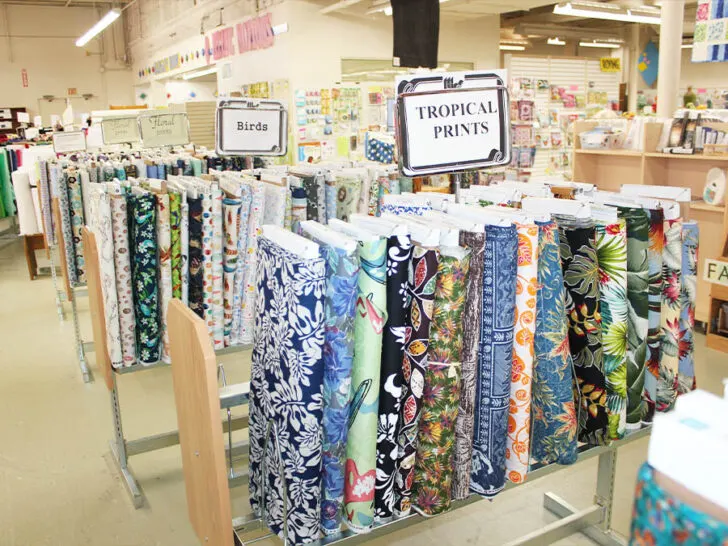
Note: Some of the links on this page are affiliate links. This means I will receive a commission if you order a product through one of my links. I only recommend products I believe in and use myself.
I do a lot of my shopping at Joann Fabrics because that store does a pretty good job of finding that balance between quality and price. Plus, they often offer coupons to use as well.
However, when I want a larger selection or an even higher quality fabric for a project, I will visit a quilt shop.
A very convenient and efficient way to get the fabric you need for your quilting projects is to buy quilting cotton online. Amazon offers a huge selection of quilting cotton fabric from a variety of manufacturers, in different colors, patterns, and weights.
As a fan of quilting cotton fabric and beautiful designs, I absolutely love the Timeless Treasures brand on Amazon. They offer a wide range of quilting fabric in stunning colors and patterns that never fail to inspire my next quilting project. From florals to geometrics, to seasonal and holiday-themed prints, there’s something for everyone in their collection.
However, I have to admit that browsing their fabrics can be dangerous for my wallet! Their fabrics are so nice that it’s hard to resist buying them all.
One of the benefits of buying quilting fabric on Amazon is the ability to read reviews from other customers who have purchased the fabric. This certainly helps you make an informed decision about the quality and suitability of the fabric for your project.
Also, Amazon often offers competitive pricing and fast shipping options. Check the seller’s return policy and shipping information before making your purchase.
How Much Is Quilting Cotton?
Depending on the quality of the fabric you purchase, the print you purchase, and where you buy it, the price can range from roughly $5 to $25 per square yard.
The higher quality fabrics will be more expensive but they will also be better to work with in many ways. That said, I think there are definitely times to use lower quality fabrics, but it’s important to know the difference between lower quality and higher quality so you can choose the best fabric for your project.
Is There Organic Quilting Cotton?
Yes, there is organic quilting cotton available. Organic fabric is made from cotton that has been grown without the use of synthetic pesticides or fertilizers, and is processed and manufactured using environmentally-friendly methods. Organic cotton is a high-quality fabric that is better for the environment.
You can sometimes find organic options in fabric stores, or you can find some nice options online. My favorite online store for organic fabric is called Sew Organic Fabric at this link – https://seworganicfabric.com/. The store sells organic quilting cotton from many famous brands. I even did interview with the store owner Teresa and you can find the published article on my site – Organic cotton benefits: Interview with an organic fabric store owner.
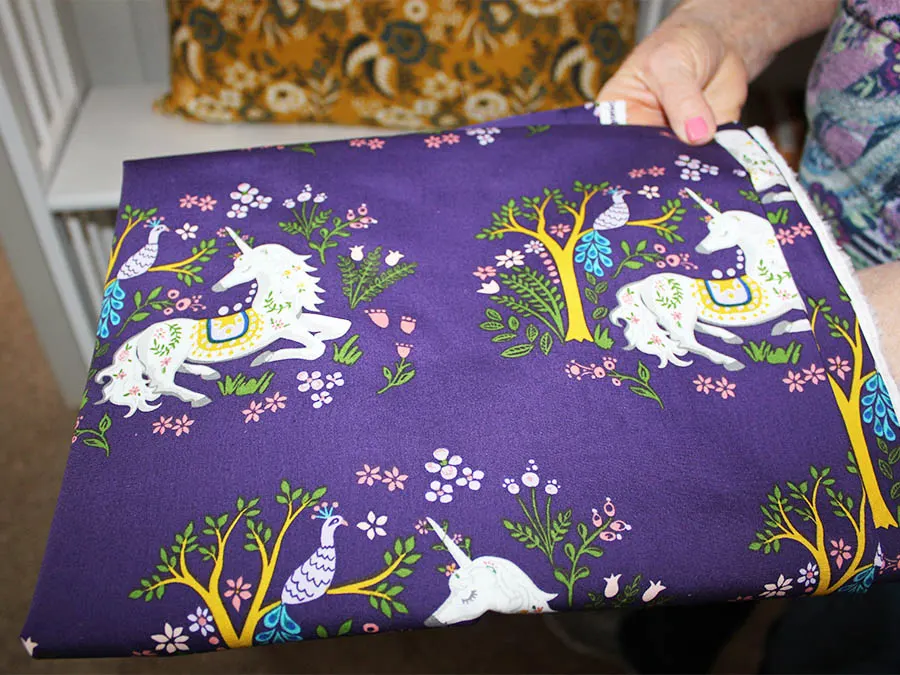
Does Quilting Cotton Shrink?
Yes. All cotton shrinks when exposed to high heat or moisture – up to 5%. It can shrink differently in length than in width. The amount of shrinkage can vary depending on the fabric and the washing method
When you shop for quilting fabric, it can be helpful to look for information on the fabric’s shrinkage rate. Some fabric manufacturers and retailers may provide information on the estimated shrinkage of their fabrics, which can help you plan and create your quilt with more accuracy.
For example, some quilting fabrics for sale on Amazon may include information on their estimated shrinkage rate. One such example is this Spoonflower fabric that has an estimated shrinkage of 1-3% in length and 2-4% in width. This means that if you have a quilt that is supposed to finish at 100 inches, after it is washed, it could shrink to 97 inches in length and 96 inches in width.
But not all quilting cotton fabrics may include information on their estimated shrinkage rate
That being said, it is important to know the quality of the cotton quilting fabric that you purchase because quilting fabric goes through a multi-step finish process.
This process helps to make the fabric:
- Softer
- Reduce shrinkage
- Set the dyes
Inexpensive fabrics are cheaper because they skip these steps, which leaves a fabric that is:
- Stiffer
- Shrinks more
- Has less colorfastness
To prevent excessive shrinking, it is recommended to prewash quilting cotton before using it in a quilt. This will also help to remove any excess dye or sizing, which can cause the fabric to shrink more than expected.
Does Quilting Cotton Need to be Prewashed?
Now here is a “hot topic” for you – who knew? You’ll find that quilters tend to have opposing views and strong opinions around prewashing quilting cotton.
When it comes to pre-washing cotton quilting fabrics, it’s really a matter of personal choice. And that choice may differ with each project or on the fabrics you buy.
Factors that may influence your choice of prewashing include:
- How you plan to use the fabric (if you’re making clothing, I recommend always prewashing)
- The techniques you’ll be using
- How you want the finished product to look
- Any sensitivities you may have regarding the chemicals used in the fabric finishing process
However, with that background knowledge, here are the arguments for pre-washing vs not pre-washing.
Arguments for Pre-washing
- Even the highest quality cotton shrinks a little. Pre-wash to prevent shrinkage when you don’t want your final product to shrink after sewing.
- Pre-washing removes any excess dyes (especially the not so good quality dark blues, reds, purples, and greens). If you plan to use these high saturation colors with white, definitely pre-wash.
- Pre-wash to remove chemicals left from the finishing process.
Arguments for Not Pre-Washing
- Many cotton quilting fabric manufacturers check their products for colorfastness. The finishing process includes steps to ensure dyes are set.
- If you’re planning to make something that will never be washed (such as a wall hanging), colors will be most vibrant if not washed.
- Fabric straight off the bolt is crisp from the finishing process, making it easier to cut and sew.
- When you wash your finished quilt, it will shrink and give it a soft, quilty, worn-in look.
- Time – wouldn’t you rather get straight to working on your sewing project when you bring a new fabric home?
As you can see, there isn’t a one-size-fits-all answer on this topic. For what it’s worth- since cotton is sturdy enough to handle lots of washings, I’m a fan of pre-washing to shrink my fabric on purpose before I create my project.
✅ Related tutorial: Prewashing Fabric: Is It A Good Idea?
Where is Quilting Cotton Made?
This is not an easy question to answer. It’s a time-consuming process because each brand is manufactured in different locations and countries.
However, from my research and experience with fabrics, here is what I know.
- American Made Brand is made in the USA. Here is the link to read more about it – https://clothworks.com/CollectionDetailList/AMB001/American%20Made%20Brand%20Solids/CLOTHWORKS
- Many other brands such as Kona Cotton, Moda, Cloud 9, Art Gallery, FreeSpirit, and more are made in Asia (China, India, Japan, Korea, Thailand).
Can Quilting Cotton be Used for Clothing?
Yes, quilting cotton fabric can definitely be used to make clothing.
Generally speaking, it is easy to work with, cuts nicely, doesn’t slide while sewing, irons well, and holds a crease like a champ.
However, I wouldn’t say that quilting cotton is a good choice for all garments. Quilting cotton is a tightly woven fabric with a stiffer texture, which can make it less suitable for clothing items that require more drape and movement, such as flowing dresses or skirts.
Quilting cotton can be an excellent option for specific types of clothing, including straight dresses and skirts, aprons, simple blouses, etc. It is also a well-liked fabric for children’s clothing due to its durability and ease of maintenance.
Here are some factors to consider when deciding whether to use quilter’s cotton for your clothing project.
- Quilter’s fabric is woven – then printed, which creates the probability that the print can be off-grain and can cause prints (especially stripes) to not line up perfectly.
- The fabric is very casual-looking, so while it would make adorable little girl dresses and some nice blouses, skirts, etc, it would not work well for making dressier clothing.
- Choose your print carefully. Opt for larger scale prints for clothing and small scale prints for quilts.
I’ve had a lot of success using quilting cotton to make garments. I really like how they turned out, especially my fun summer dress. I even have a tutorial on my site showing how to make an easy pattern for this dress and how to sew it step-by-step.
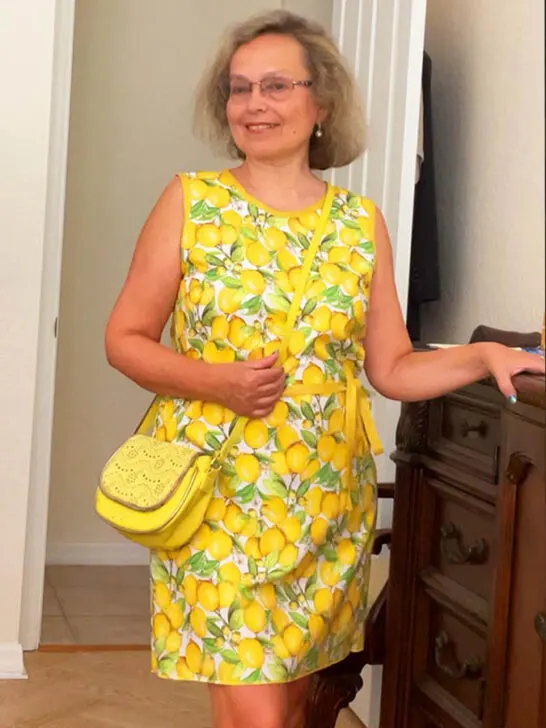
One of my favorite pieces is a simple blouse I made from quilting cotton 20 years ago that still looks like new wash after wash. It’s incredible how durable quilting cotton can be.
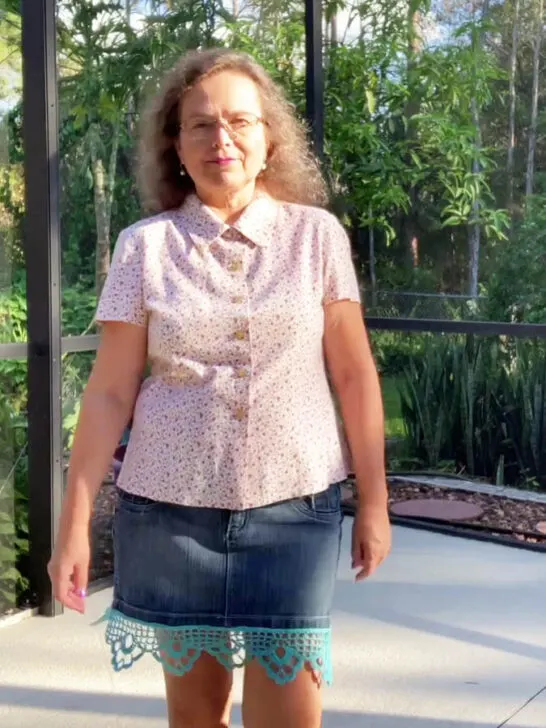
I also made a bucket hat and another dress from quilting cotton, and I love to wear them. The stiffer texture of quilting cotton lends itself well to garments that require structure and shape, such as this straight dress. And the bucket hat is another example of how quilting cotton can be used to create fun and functional accessories.
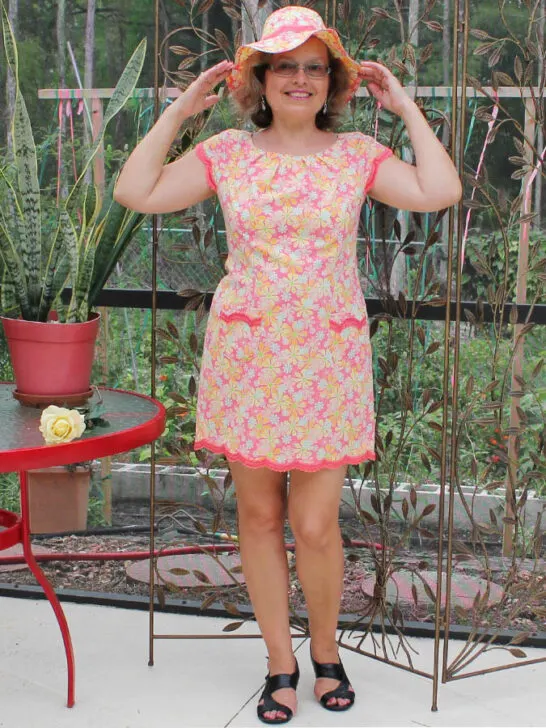
And this blouse is made from quilting cotton. It’s a lovely blue color with daisies, which happen to be my favorite flower on fabric. In fact, I collect fabric with daisies on it and quilting cotton has many examples of this type of floral pattern. The quilting cotton gives the blouse a nice structure and shape. Plus, the daisy pattern adds a fun and playful touch.
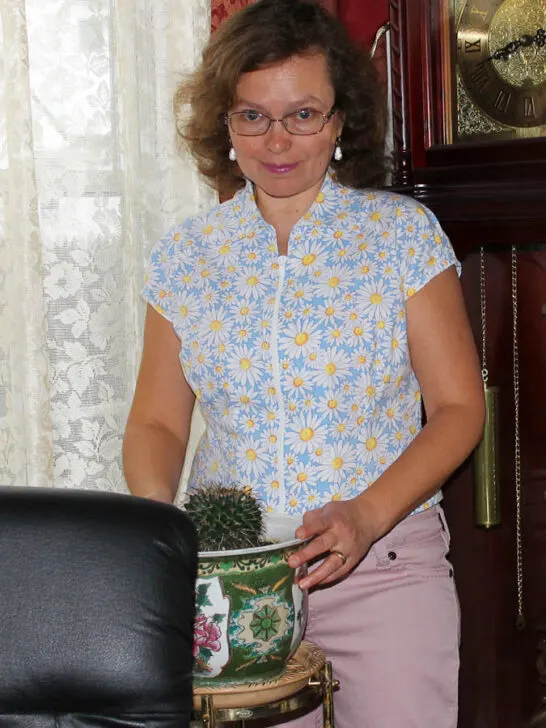
Oh, I have another sewing project I created using quilting cotton – a unique apron with a towel attached! This practical and stylish apron is perfect for keeping you clean and dry while you cook, clean, or craft. If you’re interested in making this apron, be sure to check out the tutorial – How to make a unique apron with a towel attached.
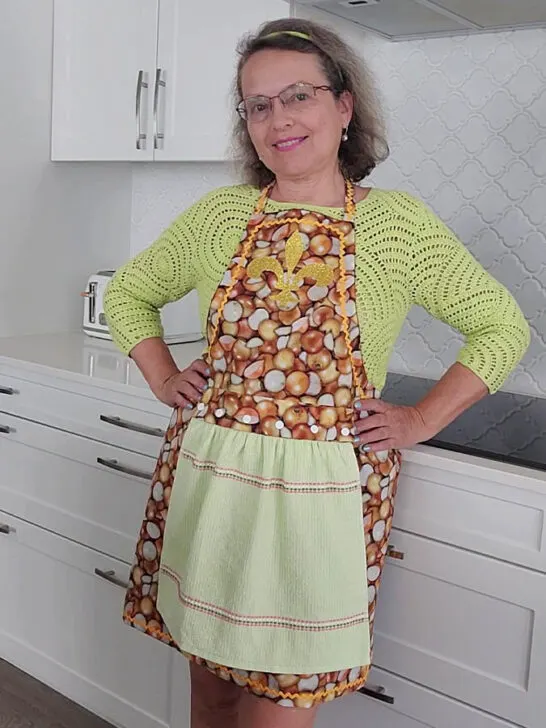
While quilting cotton may not be the first choice for all clothing items, it can be a great option for certain types of garments and accessories.
Did you find this guide on quilting cotton fabric helpful? If so, be sure to save this pin to your fabric board and follow me on Pinterest for more tips, tutorials, and inspiration! That way, you’ll have easy access to this information whenever you need it.
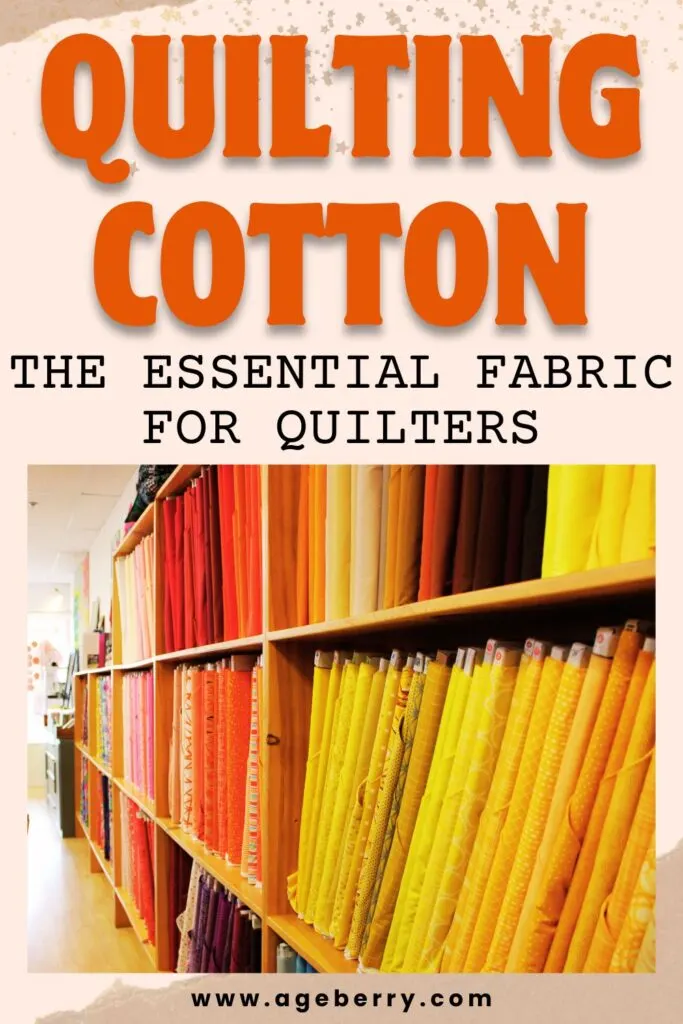
If you liked this guide on quilting cotton and want to learn more about quilting techniques and tools, be sure to check out my tutorial on how to cut fabric for quilting with modern fabric cutting machines Cricut and AccuQuilt.
latest posts
- Knot a Problem: Easy Ways to Secure Short Thread Ends
- Ever Tried This on Your Serger? This Differential Feed Feature Will Amaze You
- Ditch My Sewing Machine? Not in This Lifetime!
- Adorable DIY Needle Book | Easy Tutorial for Beginners
- Master the Seam Ripper: Your Ultimate Guide to Precision Stitch Removal
- Think You Know Zippers? This Installation Guide Might Surprise You
- Why Does Your Seam Ripper Have a Red Ball? Discover Its Purpose!
- Topstitching Troubles? This Simple Trick Will Turn It Around Instantly!
- How to Sew Shirring: A Step-by-Step Guide to Elastic Thread Gathering

